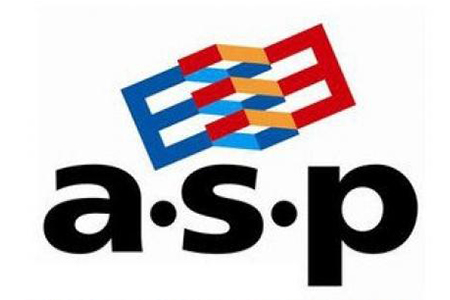What is ASP
ASP is a server-side scripting technology. It supports a variety of scripting languages and can be used to create dynamic pages. In addition, it can convert the created pages into Send it to the browser and dynamically generate HTML code.

[Recommended tutorial: ASP tutorial]
What is ASP?
ASP stands for Active Server Pages. It is a server-side technology that can produce dynamic and interactive web pages that are not affected by browser type. Actually ASP pages are scripts that run or execute on the web server. The script is interpreted from top to bottom to create the HTML page that is sent to the browser for display. Typically it runs on Microsoft Web Server and Internet Information Server (IIS).
Which languages can be programmed in ASP?
ASP is a scripting technology that is actually language-independent. But the common language used to write ASP is VBScript. It is a Microsoft scripting language based on Visual Basic. VBScript is not much different from using VB in an application or using VBA in Microsoft Office. In addition, it also supports other scripting languages, such as Perl, etc.

What can ASP do?
If you want to dynamically create pages when the browser requests the page, then ASP is suitable. For example date, time and other information can be displayed in different ways. You can also create a survey and ask people who visit the website to fill it out, send an email and save the information to a file, etc. Typically an ASP script queries the database and formats the retrieved data for display in an HTML page.

Summary:
In essence, ASP is a server-side scripting technology. It allows HTML and scripting languages to be interspersed within web pages. The scripting language may access the file system or registry or database and will generate HTML code "on the fly" to make the Web site dynamic and user-specific.
The above is the detailed content of What is ASP. For more information, please follow other related articles on the PHP Chinese website!

Hot AI Tools

Undresser.AI Undress
AI-powered app for creating realistic nude photos

AI Clothes Remover
Online AI tool for removing clothes from photos.

Undress AI Tool
Undress images for free

Clothoff.io
AI clothes remover

Video Face Swap
Swap faces in any video effortlessly with our completely free AI face swap tool!

Hot Article

Hot Tools

Notepad++7.3.1
Easy-to-use and free code editor

SublimeText3 Chinese version
Chinese version, very easy to use

Zend Studio 13.0.1
Powerful PHP integrated development environment

Dreamweaver CS6
Visual web development tools

SublimeText3 Mac version
God-level code editing software (SublimeText3)

Hot Topics
 Analysis of Vue and server-side communication: how to handle timeout requests
Aug 10, 2023 pm 01:51 PM
Analysis of Vue and server-side communication: how to handle timeout requests
Aug 10, 2023 pm 01:51 PM
An exploration of communication between Vue and the server: Methods of handling timeout requests Introduction: During the development process of Vue, communicating with the back-end server is a very common situation. However, sometimes requests may time out due to network delays or other reasons. This article will discuss how to handle timeout requests in Vue and provide corresponding code examples. 1. Use Axios for requests In Vue, we usually use Axios as the HTTP client library to make network requests. Axios provides a series of methods to send requests and can
 File upload using PHP
Jun 22, 2023 pm 09:55 PM
File upload using PHP
Jun 22, 2023 pm 09:55 PM
In modern Internet applications, the file upload function has become an indispensable part. Whether it is a personal blog, social media or online mall, on many occasions we need to upload files to achieve specific functions. However, there may be problems during the implementation of this function, including file size limitations, file format limitations and security issues that require reasonable handling. This is also a common PHP file upload technology that will be introduced in this article. 1. Upload process Before starting to understand PHP file upload in depth, let’s briefly understand
 What are the built-in objects in asp?
Nov 09, 2023 am 11:32 AM
What are the built-in objects in asp?
Nov 09, 2023 am 11:32 AM
ASP built-in objects include Request, Response, Session, Application, Server, Session.Contents, Application.Contents, Server.CreateObject, Server.MapPath, Server.Execute, Server.Transfer, etc. Detailed introduction: 1. Request: represents HTTP request object, etc.
 How to manage server-side caching with PhpFastCache
Jul 07, 2023 pm 02:48 PM
How to manage server-side caching with PhpFastCache
Jul 07, 2023 pm 02:48 PM
Introduction to how to use PhpFastCache to manage server-side caching: In server-side development, caching is one of the important means to improve application performance and response speed. PhpFastCache is a cache management library based on PHP. It provides a simple and easy-to-use interface and rich caching strategies, which can effectively manage server-side cache data. This article will introduce how to use PhpFastCache to manage server-side cache and explain in detail through code examples. 1. Install and configure PhpFa
 What are the asp development tools?
Oct 23, 2023 am 11:02 AM
What are the asp development tools?
Oct 23, 2023 am 11:02 AM
ASP development tools include Visual Studio, Dreamweaver, FrontPage, EditPlus, UltraEdit, SQL Server Management Studio, RAD Studio, Delphi, Asp.NET and Oracle SQL Developer.
 How to manually detect vulnerabilities in asp
Oct 13, 2023 am 10:49 AM
How to manually detect vulnerabilities in asp
Oct 13, 2023 am 10:49 AM
ASP manual detection of vulnerabilities: 1. Check the ASP application's verification and filtering mechanism for user input; 2. Check the ASP application's encoding and filtering mechanism for output data; 3. Check the ASP application's authentication and session management mechanism; 4. Check the ASP application's permission control on files and directories; 5. Check the ASP application's handling of errors; 6. Check the ASP application's database security; 7. Check the ASP application's configuration file and server configuration.
 asp scanning tool vulnerability detection
Oct 13, 2023 am 10:45 AM
asp scanning tool vulnerability detection
Oct 13, 2023 am 10:45 AM
ASP scanning tool vulnerability detection: 1. Select the appropriate scanning tool; 2. Configure the scanning target in the scanning tool; 3. Configure scanning options as needed; 4. After the configuration is completed, start the scanning tool to start scanning; 5. Scanning tool A report will be generated listing the detected vulnerabilities and security issues; 6. Fix the detected vulnerabilities and security issues according to the recommendations in the report; 7. After fixing the vulnerability, re-run the scanning tool to ensure that the vulnerability has been successfully exploited repair.
 What are the methods for detecting asp vulnerabilities?
Oct 13, 2023 am 10:42 AM
What are the methods for detecting asp vulnerabilities?
Oct 13, 2023 am 10:42 AM
Methods include: 1. Use specialized vulnerability scanning tools; 2. Manual testing to discover and verify vulnerabilities in ASP applications; 3. Conduct security audits to check the code and configuration files of ASP applications; 4. Use vulnerability exploitation frameworks; 5. Review the code of the ASP application.






